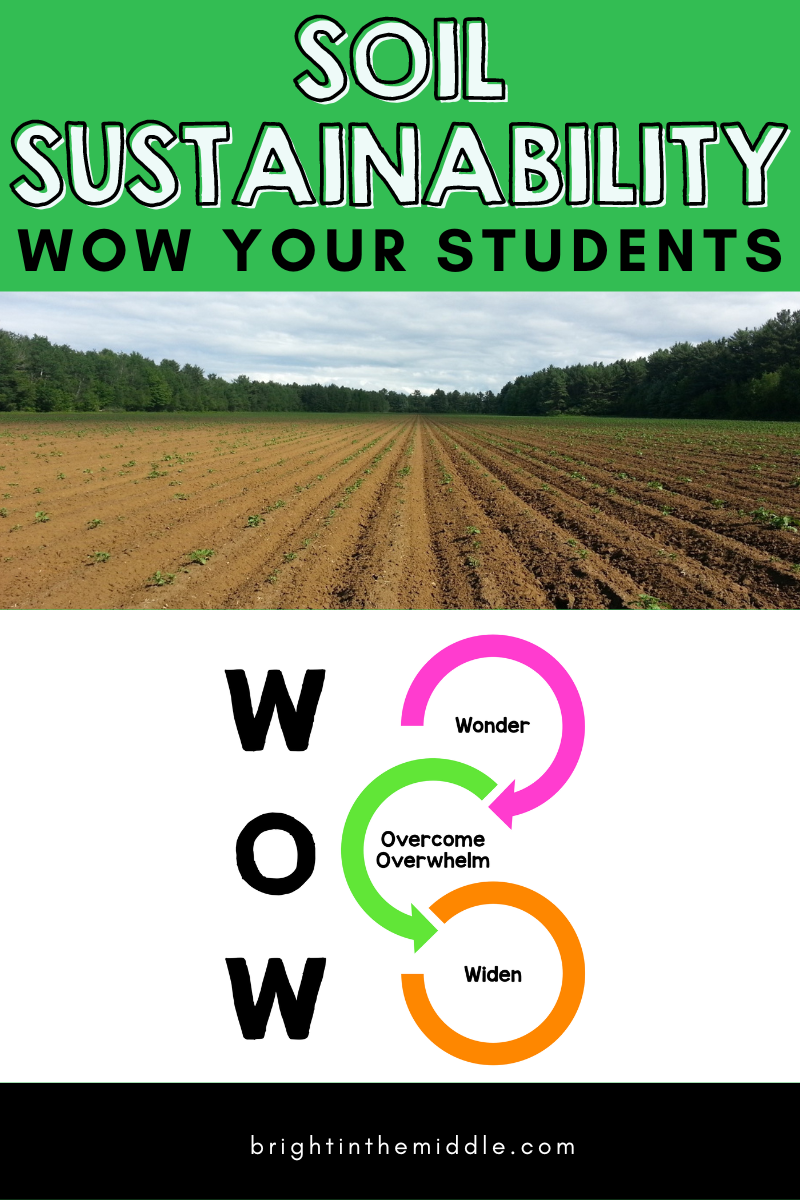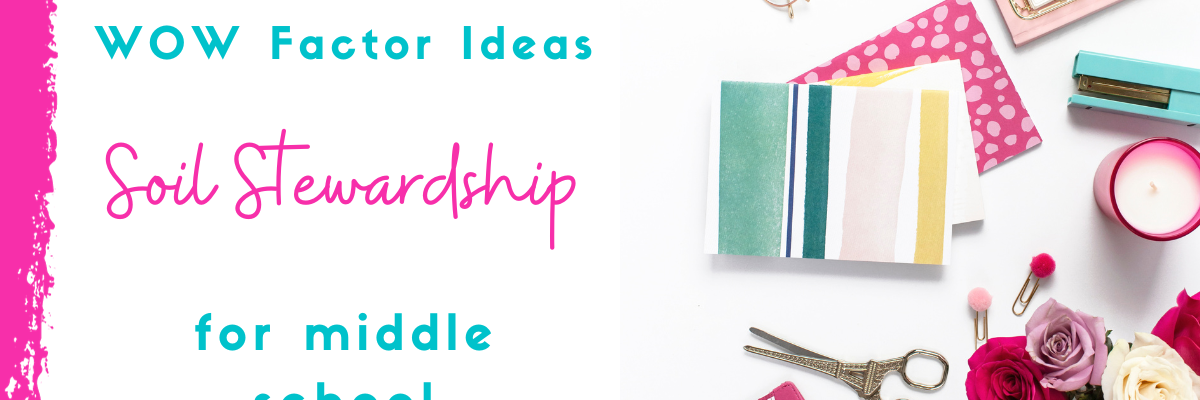Soil sustainability and stewardship is an important concept to speak about with students. What exactly is stewardship? It’s responsibly planning and managing resources. It is important for humans to be stewards of the pedosphere (the soil layer of the Earth’s surface) because soil is an essential resource that supports human life.
There are natural and human-caused issues that impact soil and human health negatively. It’s important to be aware of these activities, and to take steps to reduce their effect on soil, in order to maintain the health and productivity of soil for future generations.
In this post, I share WONDER strategies to help students to become internally motivated to learn more about the topic. Second, I share an interactive lesson that focuses on teaching soil quality and soil stewardship. Finally, I share some WIDEN activities for students to participate in to expand their knowledge on the importance of soil sustainability.
These are perfect lesson plan activities to do after teaching the formation of soil, soil horizons, and soil properties.

Soil Sustainability and Stewardship WONDER Strategies
Sometimes, your students may need a little “push” to become excited about a topic. They may have absolutely no interest in soil and taking care of it. They may see no need at all! This is where WONDER strategies come in. They are a part of the WOW Factor. Here are some WONDER strategies to get your students excited about learning about soil sustainability and stewardship!
Soil Erosion Demonstration
To give students a visualization of fields that may be impacted by soil erosion, especially after heavy rains, you can do a quick demonstration.
At this point, students should have already learned about the layers of the soil, and they know that the topsoil is the most fertile layer. What happens when this is washed away? This is a great conversation to have with your students.
You will need:
- A rectangular tray filled with soil
- A rectangular tray filled with soil and grass seed
- A larger tray to set these in
- Watering can with water
- You will take two rectangular trays (one with just soil and one with grass) and set them angled inside the larger tray.
- Make it “rain” on each of the trays.
- Observe the erosion that occurs and record observations.
As a class, discuss why these observations are important for agriculture. What may farmers do in order to prevent erosion of topsoil? Some students may have insight into some strategies like windbreaks, and root systems. They will learn more in the lesson!
Don’t have the time or materials for this demonstration. You can show your students this video!

Stewardship Post-It Discussion
I love a good post-it note discussion! If you’ve read my previous blog posts, you may have read about this strategy before. It’s a great way to get students up, moving, and thinking about a topic.
- Give each student one post-it note.
- Ask them the question: What are some ways that humans may impact soil negatively?
- Have them write their answer on the post-it note.
- Once students have their answer written down, they can bring their post-it to a designated spot, like on the whiteboard or a spot on the wall.
- Either you, or a student volunteer, can read some of the answers out loud. Are there any of the same answer? Are there any patterns?
- Have a discussion with your class.
Some of the answers include overuse, urbanization and development, deforestation, and pollution. They’ll learn more in the lesson, but they should be becoming curious now and starting to WONDER.
Soil Stewardship Interactive Lesson
WONDER strategies are the first thing to implement in the WOW Factor. The second is OVERCOMING OVERWHELM.
When teaching science, there is a lot of information and a ton of vocabulary. It’s important to start simple with students and use researched-based strategies when presenting information. If students are thrown too much information at one time, they end up not learning anything at all.
You should work to reduce students’ cognitive load, and that’s what interactive lessons are designed to do. They use the 7 steps to help students retain information.

In this Soil Stewardship Interactive Lesson, students learn all about how to be good stewards of the environment. They will learn about stewardship, the importance of being good stewards of the pedosphere and the importance of soil sustainability, erosion, soil as a vector, human activities that negatively affect soil, and measures that are taken to control the negative impact on soil.
There are embedded activities in the lesson that allow for students to pause and reflect on the content. These include vocabulary matching, drag-and-drop activities, and exploring outside resources!
This lesson can be found in the Bright in the Middle Shop.
It can also be found on TPT.
Soil Sustainability and Stewardship WIDEN Activities
Now it’s time to expand student knowledge on this topic. Try one of these WIDEN activities!
Local Farmer Guest Speaker
One great way to help your students to expand their knowledge on any topic is to get a guest speaker to come to your classroom!
If you live in an agricultural area, or if there is any agriculture around, a great guest speaker to have is a local farmer or soil scientist. They will be able to discuss sustainable soil use and possibly some soil conservation jobs that are available to attain.
They are the perfect ones to explain what technology is currently being used in the field and what measures are being taken to keep the soil healthy and grow the foods that we eat.
Local Clean-Up Event
Soil pollution can harm soil quality and pose risks to human health. Soil pollution can include things such as pesticides, fertilizers, and industrial chemicals, but litter and trash can also be unsightly and hinder plant growth. They may also introduce more pollutants into the soil.
To really dive into being good stewards of the environment, organize a clean-up for your class! This can be in your backyard at the school, or in the local park, or even a local farm.
This will actually be so much fun for the students. It’s always great to do something kind!
What soil conservation ideas will you add to your lesson plan?
Help your students master science content!



[…] Soil Sustainability […]